Roses are one of the most beloved flowering plants in the world, admired for their beauty, fragrance, and timeless charm. Whether you grow them in a backyard garden, in containers on your patio, or along elegant fences, roses reward attentive care with abundant, colorful blooms. One of the most essential aspects of rose care is proper watering — too much or too little water can quickly stress the plant and hinder its growth.
So, how often should you water a rose plant? The answer depends on several factors such as climate, soil type, plant maturity, season, and whether the rose is planted in the ground or a pot. This article provides a comprehensive guide to watering rose plants, signs of over- or under-watering, and expert tips to help your roses thrive beautifully.
Introduction to Rose Watering Needs
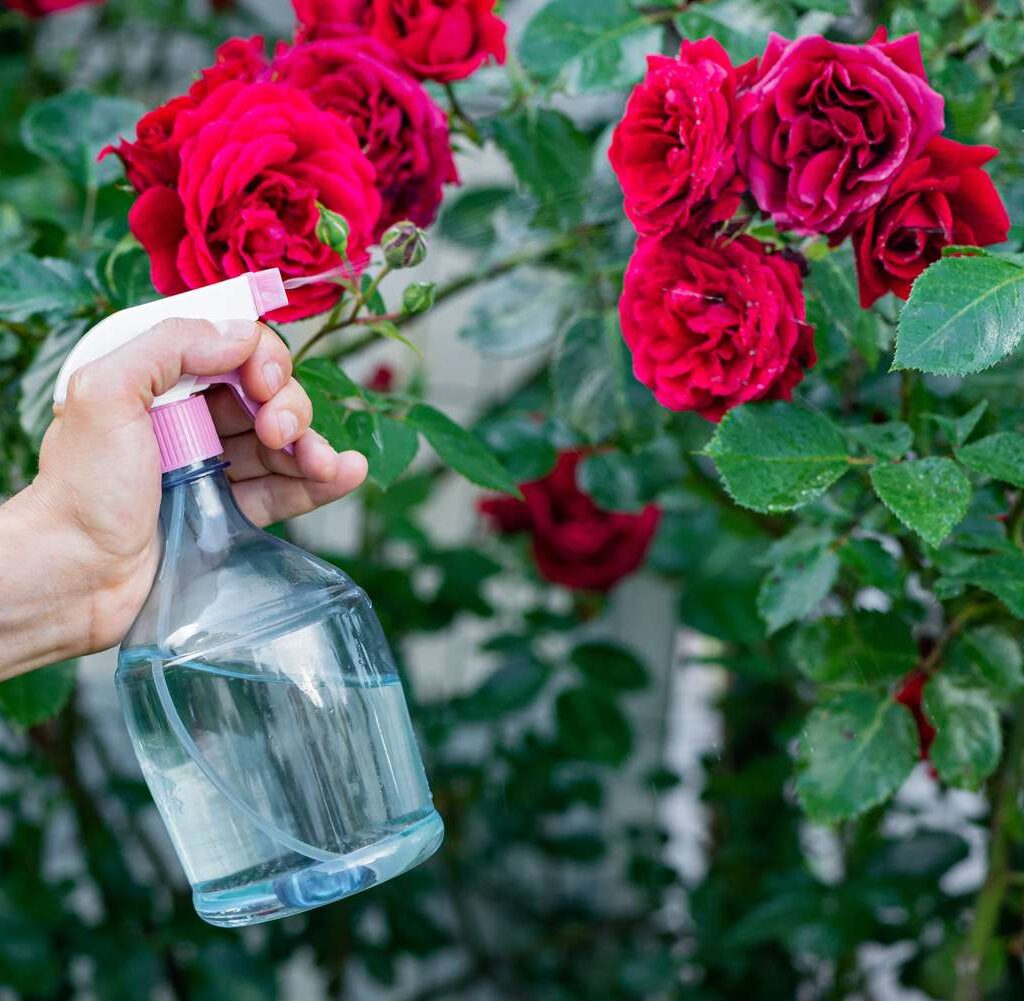
Roses, like all flowering plants, need a consistent supply of water to sustain healthy growth and continuous blooming. Water is crucial for transporting nutrients from the soil to the plant, keeping foliage lush, and supporting the formation of buds and flowers.
However, roses are neither drought-tolerant succulents nor water-loving marsh plants. They fall somewhere in between, preferring deep, infrequent watering rather than daily surface sprinklings. Correct watering ensures strong roots, disease resistance, and a vigorous display of blooms throughout the growing season.
How Often Should You Water a Rose Plant?
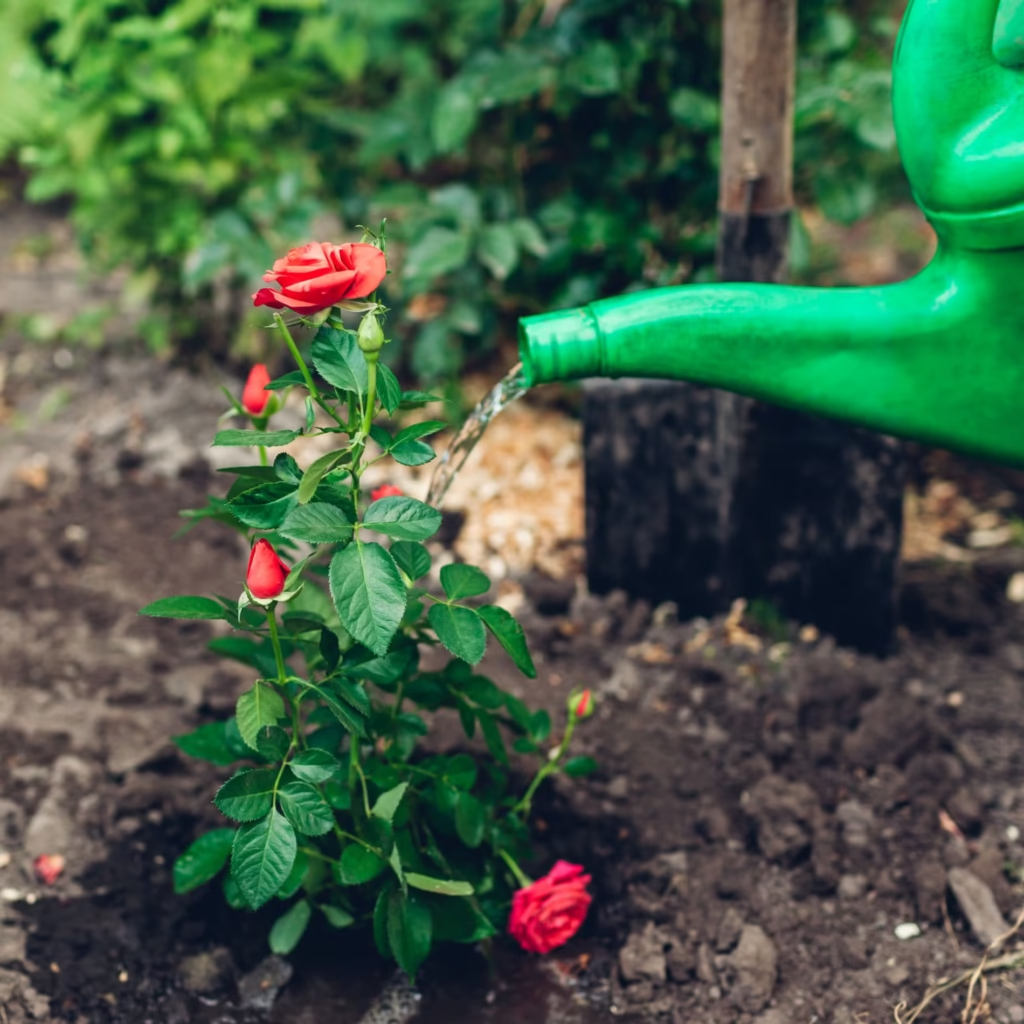
General Watering Guidelines:
- Newly planted roses: Every 2-3 days for the first 2-3 weeks until they establish roots.
- Established outdoor roses (in the ground): Water 1-2 times a week during the growing season (spring to fall), providing a deep soak.
- Container-grown roses: Typically need watering every 1-2 days in hot weather, and every 2-3 days in cooler months.
- During hot, dry spells: Water more frequently, adjusting based on soil moisture and plant condition.
The key is to water deeply enough to saturate the root zone (about 12-18 inches deep) and then allow the soil to dry out slightly before watering again.
Factors That Affect Rose Watering Frequency
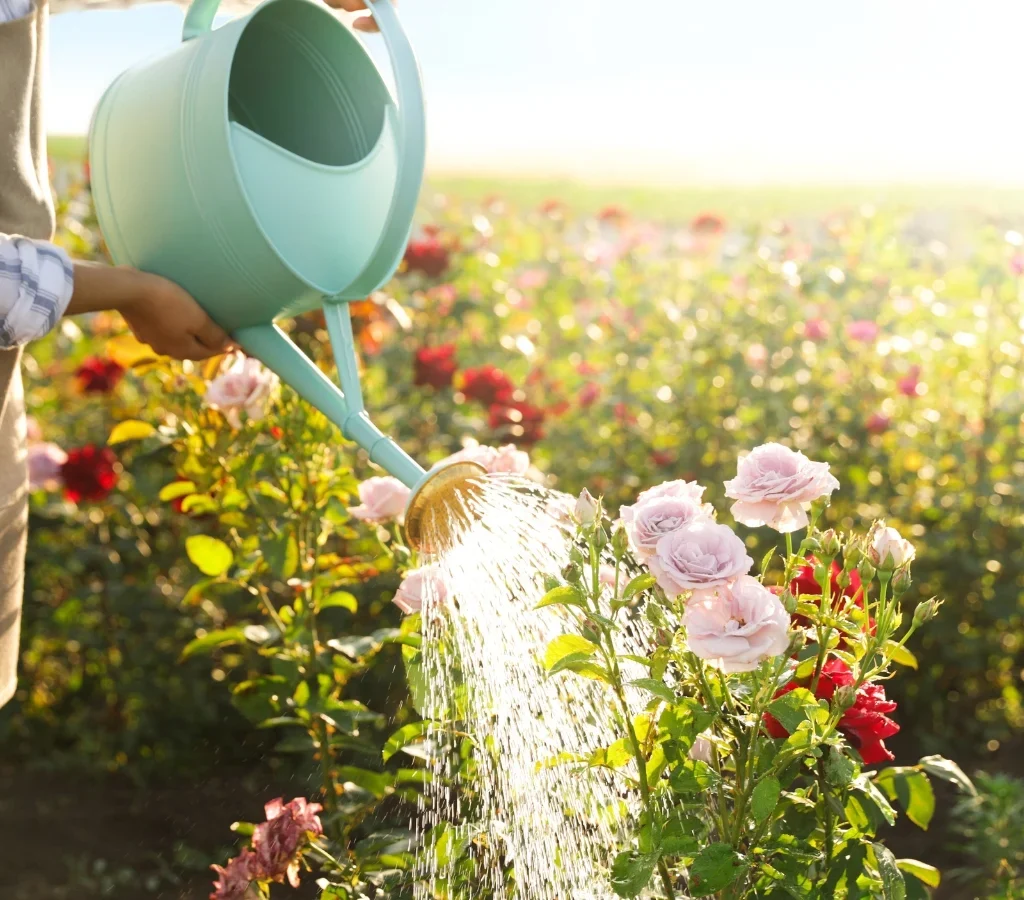
Several environmental and situational factors influence how often you should water a rose plant:
1. Climate and Weather Conditions
- Hot, dry climates: Require more frequent watering, sometimes every other day during heatwaves.
- Cool, humid climates: Watering once a week may be sufficient as soil retains moisture longer.
2. Season
- Spring and Summer: Roses actively grow and bloom, requiring regular watering — typically 1-2 times a week.
- Autumn: As temperatures drop and growth slows, watering can be reduced to once every 7-10 days.
- Winter: In cold climates where roses go dormant, watering should be minimal, only when soil is completely dry.
3. Soil Type
- Sandy soil: Drains quickly, necessitating more frequent watering.
- Clay soil: Retains moisture longer, so watering less often is needed.
- Loamy soil (ideal for roses): Maintains consistent moisture with moderate watering.
4. Plant Maturity
- Newly planted roses: Have shallow, developing roots and need more frequent watering.
- Mature, established roses: Have deeper roots and can handle less frequent, deeper watering.
5. Container vs. In-ground Planting
- Potted roses: Dry out faster than garden roses, requiring closer monitoring and more frequent watering.
- In-ground roses: Benefit from natural soil insulation and can retain moisture longer.
How to Water a Rose Plant Properly
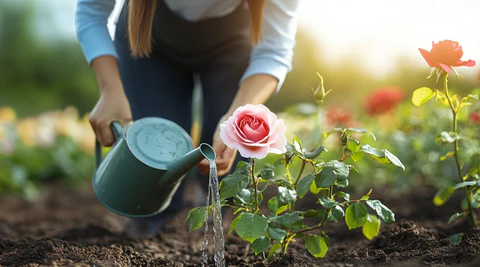
Knowing how to water roses correctly is as important as knowing how often. Here’s the best method for watering your rose plants:
Step 1: Check the Soil Moisture
Before watering, stick your finger about 2 inches into the soil. If it feels dry at this depth, it’s time to water.
Step 2: Water at the Base
Always water at the base of the plant, avoiding foliage to reduce the risk of fungal diseases like black spot and powdery mildew.
Step 3: Deep Soaking
Give the rose a slow, deep soak so that water reaches the root zone (12-18 inches deep). Avoid shallow watering, which encourages weak surface roots.
Step 4: Allow Soil to Dry Between Waterings
Wait for the top 2-3 inches of soil to dry out before watering again.
Signs of Overwatering and Underwatering in Roses
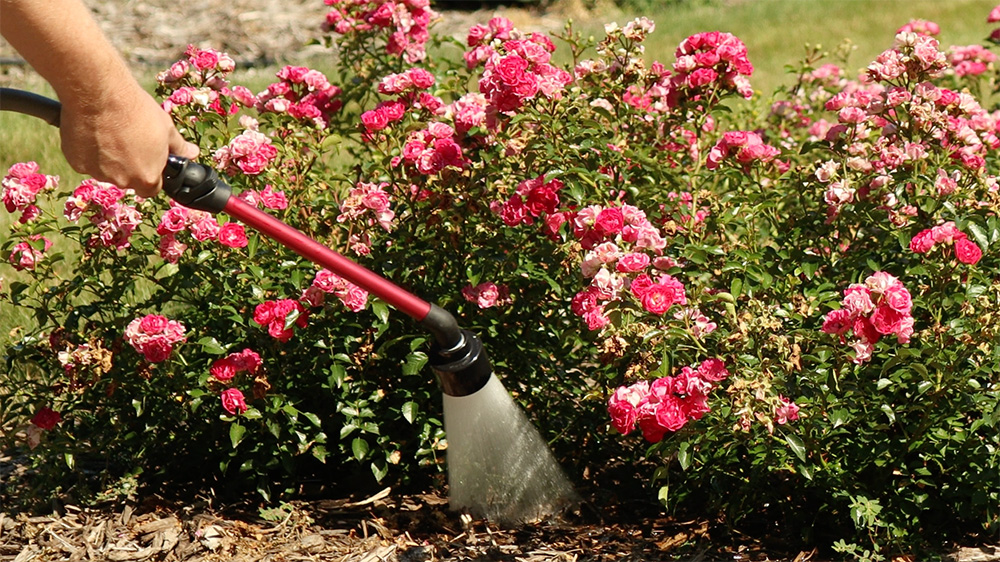
Recognizing the symptoms of improper watering helps adjust your routine for healthier, blooming roses.
Solution: Reduce watering frequency, improve drainage, and remove dead roots if necessary.
Signs of Underwatering
- Dry, brittle leaves
- Wilting, drooping stems
- Fewer and smaller blooms
- Brown leaf edges
- Dry, cracked soil pulling away from the plant
Solution: Increase watering frequency and consider mulching to retain soil moisture.
Best Watering Tips for Healthy Rose Plants
To maintain healthy, vibrant rose plants, follow these proven watering tips:
1. Use Mulch
Spread a 2-3 inch layer of organic mulch (like wood chips, compost, or straw) around the base of the plant. Mulch helps retain soil moisture, keeps roots cool, and reduces water evaporation.
2. Water Early in the Morning
Watering in the morning gives leaves time to dry during the day, reducing disease risk and maximizing water absorption before the heat.
3. Avoid Frequent Light Watering
Shallow watering leads to weak, surface-level roots. Always water deeply so roots grow downwards for strength and drought resistance.
4. Use Soaker Hoses or Drip Irrigation
Soaker hoses and drip systems deliver water directly to the soil at the plant’s base, conserving water and preventing wet foliage.
5. Adjust Watering During Rainy Periods
Reduce watering frequency during prolonged rainy spells to avoid oversaturation and root diseases.
Can You Mist Rose Plants?
It’s not recommended to mist rose plants. While misting may seem like a good way to hydrate foliage, it increases humidity around the leaves, creating a breeding ground for fungal infections. Stick to watering at the base for best results.
Watering During Drought or Extreme Heat
During extended periods of drought or extreme heat:
- Increase watering frequency to every 1-2 days for potted roses and 2-3 times a week for in-ground roses.
- Apply mulch to preserve soil moisture.
- Water deeply in the early morning or evening to minimize evaporation.
Conclusion
So, how often should you water a rose plant? The answer depends on the plant’s maturity, soil type, season, and environmental conditions. In general:
- Newly planted roses: Water every 2-3 days.
- Established in-ground roses: Water 1-2 times a week.
- Container-grown roses: Water daily to every 2 days in summer, and every 2-3 days in cooler weather.
By understanding your plant’s needs and adjusting your care routine to local conditions, you’ll ensure your roses flourish with healthy foliage and abundant blooms season after season.




Leave A Comment